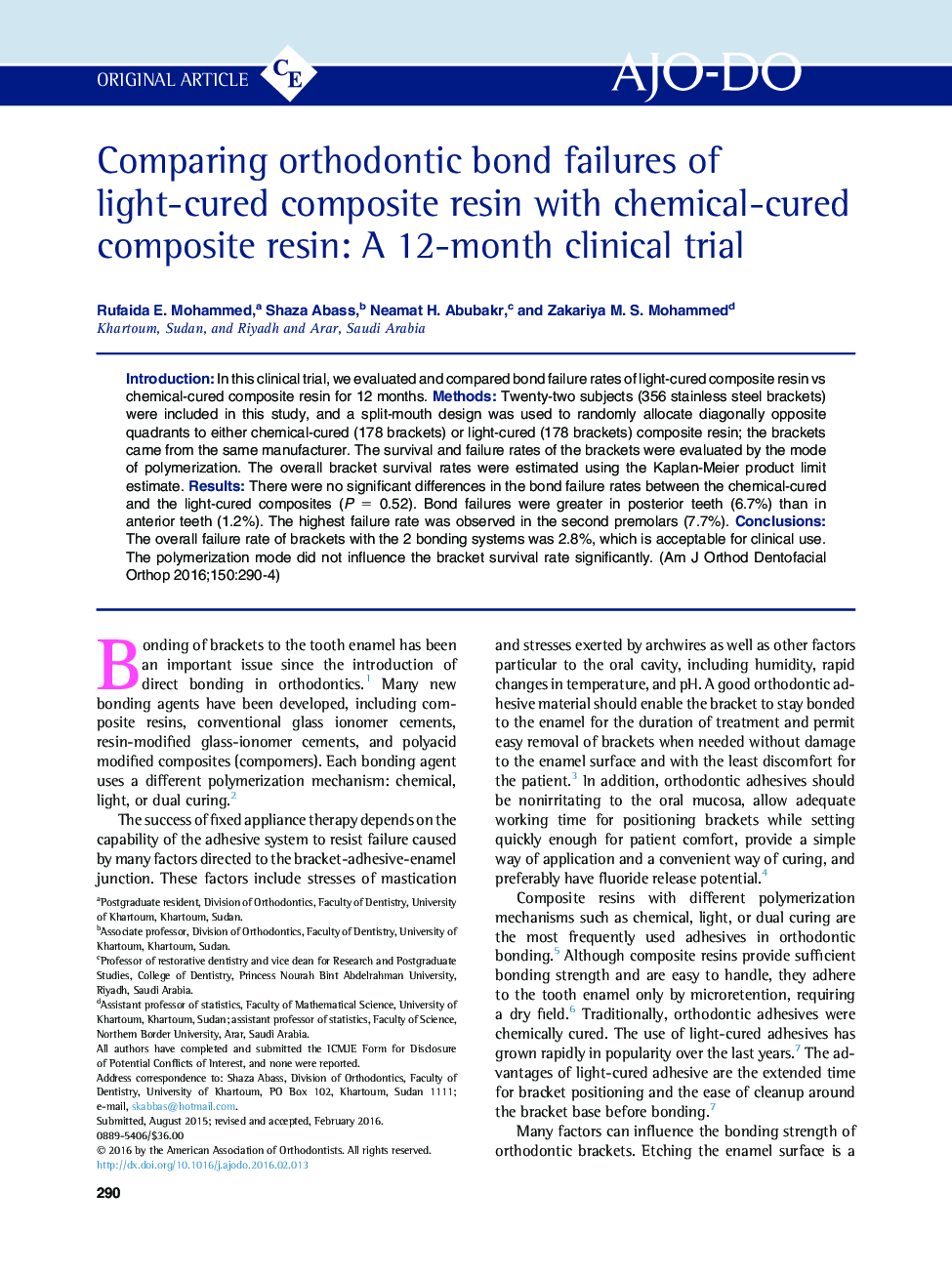| Article ID | Journal | Published Year | Pages | File Type |
|---|---|---|---|---|
| 3115415 | American Journal of Orthodontics and Dentofacial Orthopedics | 2016 | 5 Pages |
•Bracket bond failure is a frustrating occurrence in orthodontic practice.•Bond failure rates after chemical and light curing were compared in a split-mouth study.•Survival and failure rates of the brackets were evaluated by mode of polymerization.•Overall bracket survival rates were estimated with the Kaplan-Meier product limit estimate.•Polymerization mode did not significantly affect the bracket survival rate.
IntroductionIn this clinical trial, we evaluated and compared bond failure rates of light-cured composite resin vs chemical-cured composite resin for 12 months.MethodsTwenty-two subjects (356 stainless steel brackets) were included in this study, and a split-mouth design was used to randomly allocate diagonally opposite quadrants to either chemical-cured (178 brackets) or light-cured (178 brackets) composite resin; the brackets came from the same manufacturer. The survival and failure rates of the brackets were evaluated by the mode of polymerization. The overall bracket survival rates were estimated using the Kaplan-Meier product limit estimate.ResultsThere were no significant differences in the bond failure rates between the chemical-cured and the light-cured composites (P = 0.52). Bond failures were greater in posterior teeth (6.7%) than in anterior teeth (1.2%). The highest failure rate was observed in the second premolars (7.7%).ConclusionsThe overall failure rate of brackets with the 2 bonding systems was 2.8%, which is acceptable for clinical use. The polymerization mode did not influence the bracket survival rate significantly.
